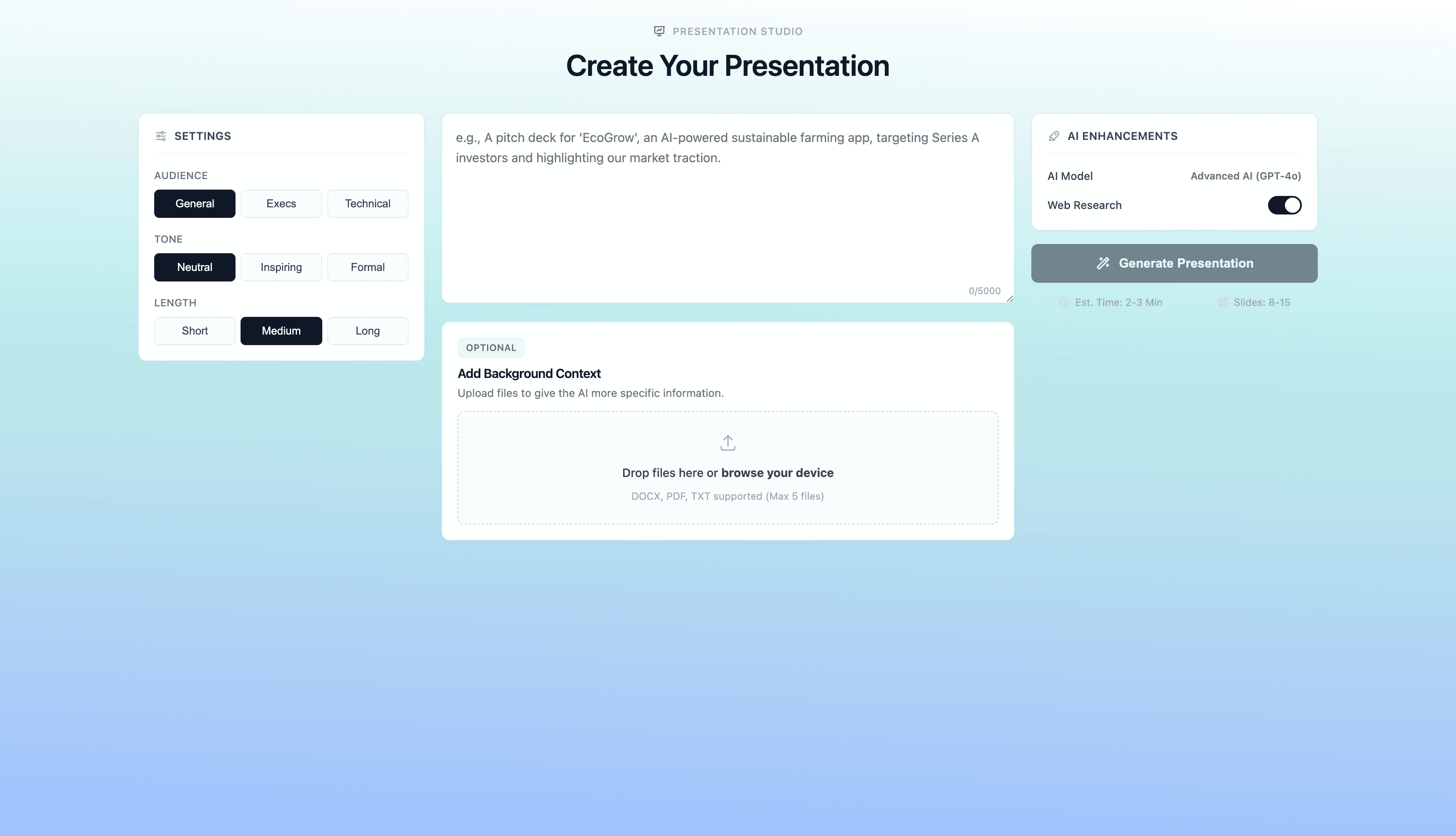Stories are how humans make sense of the world. From cave paintings to TED Talks, narratives shape our decisions, our cultures, and our businesses. But in today’s digital-first landscape, the role of storytelling is evolving.
Enter AI storytelling—a new era where machines can assist in crafting compelling narratives. While it may sound paradoxical—how can algorithms understand emotion?—advances in narrative generation AI and AI creative tools prove that technology can help humans tell better stories, not replace them.
This blog explores why storytelling software powered by AI is reshaping business storytelling, how AI communication tools enhance persuasive presentations, and why the future of storytelling will be built on human-AI collaboration.
Why Storytelling Is Central to Business
Every great business moment—from pitching investors to inspiring employees—relies on story.
- Investors fund startups that articulate a future vision.
- Sales teams win deals with compelling customer success stories.
- Executives motivate organizations through mission-driven narratives.
Data alone doesn’t persuade. Stories do. That’s why business storytelling is one of the most sought-after skills in leadership.
Yet many professionals struggle to craft narratives. Enter AI storytelling.
The Rise of AI Storytelling
AI is no longer just crunching numbers—it’s learning to generate stories. Tools powered by machine learning storytelling analyze vast amounts of text to understand narrative structure, emotional arcs, and persuasive techniques.
Some capabilities include:
- Headline generation – Creating engaging titles tailored to audiences.
- Narrative flow – Organizing content into beginning, middle, and end.
- Tone adjustment – Shifting from formal to casual depending on context.
- Audience adaptation – Reframing messages for investors vs. customers vs. employees.
This is the essence of narrative generation AI: turning raw information into coherent, compelling stories.
How AI Creative Tools Support Human Storytellers
Far from replacing human creativity, AI creative tools act as accelerators. Think of them as digital co-writers who:
- Suggest alternatives – Offering multiple phrasings or structures.
- Fill gaps – Summarizing data-heavy content into plain language.
- Enhance visuals – Pairing narratives with relevant images or metaphors.
- Ensure clarity – Identifying jargon and suggesting simpler words.
In presentations, this means faster preparation, clearer messaging, and more impactful delivery.
Storytelling Software in Action
Modern storytelling software integrates directly into workplace tools. Imagine this scenario:
- A sales leader uploads a 20-page product spec.
- AI extracts customer benefits, competitor comparisons, and differentiators.
- The system generates a persuasive presentation narrative tailored to prospects.
The salesperson spends time refining delivery, not formatting slides. This fusion of AI communication tools and storytelling is revolutionizing how businesses craft messages.
Human-AI Collaboration: A New Narrative Model
The most powerful stories emerge from human-AI collaboration. Here’s why:
- Machines excel at structure: Identifying patterns, sequences, and logical flow.
- Humans excel at emotion: Adding empathy, vision, and cultural nuance.
Together, they produce stories that are both data-rich and emotionally resonant.
Consider a persuasive presentation for investors:
- AI drafts the outline: market problem, solution, traction, financials.
- The human founder infuses passion, anecdotes, and personal conviction.
The result is a pitch that’s both factually solid and emotionally moving.
Persuasion in the Age of AI
Persuasion has always been about aligning logic with emotion. AI enhances persuasion by:
- Highlighting audience priorities (e.g., investors care about ROI, customers about value).
- Recommending persuasive frameworks like the “problem → solution → proof” model.
- Identifying story gaps where evidence is missing.
In short, AI communication tools help structure persuasion while humans deliver it.
The Role of Machine Learning in Storytelling
Machine learning storytelling involves training models on vast storytelling datasets: novels, speeches, scripts, and presentations. This allows AI to:
- Recognize arcs like “challenge → struggle → resolution.”
- Predict effective emotional beats.
- Generate metaphors aligned with subject matter.
While machines lack human lived experience, they excel at pattern recognition. This makes them powerful assistants in repetitive storytelling tasks, such as report summaries or recurring updates.
Benefits of AI in Creativity
Skeptics worry that AI will sterilize creativity. In practice, AI in creativity has several benefits:
- Speed: Generate first drafts in seconds.
- Diversity: Provide multiple narrative options humans may not consider.
- Confidence: Give non-writers the ability to tell stories effectively.
- Iteration: Allow rapid experimentation with different styles.
Instead of reducing creativity, AI expands the canvas on which humans create.
Real-World Applications of AI Storytelling
1. Business Storytelling
- Investor pitch decks generated from strategy docs.
- Internal town halls structured with AI outlines.
2. Marketing Campaigns
- Personalized customer stories at scale.
- Ad copy variations based on audience sentiment.
3. Education & Training
- AI-assisted lecture notes that weave examples into dry topics.
- Simulated storytelling exercises for learners.
4. Media & Entertainment
- Screenplay drafts generated by AI creative tools.
- Gaming narratives built with procedural storytelling AI.
Across all these domains, storytelling software reduces friction and accelerates narrative building.
Challenges and Ethical Considerations
Of course, AI storytelling is not without challenges:
- Authenticity: Can audiences detect machine-generated phrasing?
- Bias: Models may reflect harmful stereotypes from training data.
- Over-reliance: Risk of formulaic stories if humans disengage.
To address these, organizations must embrace human-AI collaboration rather than blind automation.
How to Get Started with AI Storytelling
If you’re curious about adopting these tools:
- Experiment with AI creative tools like narrative generators or summarizers.
- Integrate storytelling software into your presentation and marketing workflows.
- Refine human oversight—focus on emotional resonance and authenticity.
- Train teams on the difference between raw AI output and finished narratives.
By starting small—perhaps automating report summaries—you’ll see how AI communication tools free up time for higher-level storytelling.
Looking Ahead: The Future of Storytelling with AI
The next decade will see storytelling transformed by:
- Personalization at scale: Narratives tailored to each audience member.
- Interactive stories: Presentations adapting in real time to audience feedback.
- Cross-medium generation: AI producing text, visuals, and audio together.
- Co-creation platforms: Writers and AI tools building stories simultaneously.
Ultimately, the future won’t be machine-only or human-only. It will be co-authored.
Conclusion
Storytelling is humanity’s oldest technology. AI is simply the latest tool to enhance it.
- Narrative generation AI structures ideas.
- AI creative tools accelerate drafting.
- Storytelling software empowers business leaders.
- Human-AI collaboration ensures authenticity.
The future of storytelling isn’t about replacing humans with machines. It’s about combining the precision of algorithms with the passion of people.
For businesses, this means sharper persuasive presentations, clearer communication, and more effective narratives. For creators, it means expanding the boundaries of AI in creativity.
The question is no longer whether AI can tell stories—it’s how we choose to tell better stories together.

ML Clever Team
Product Team


